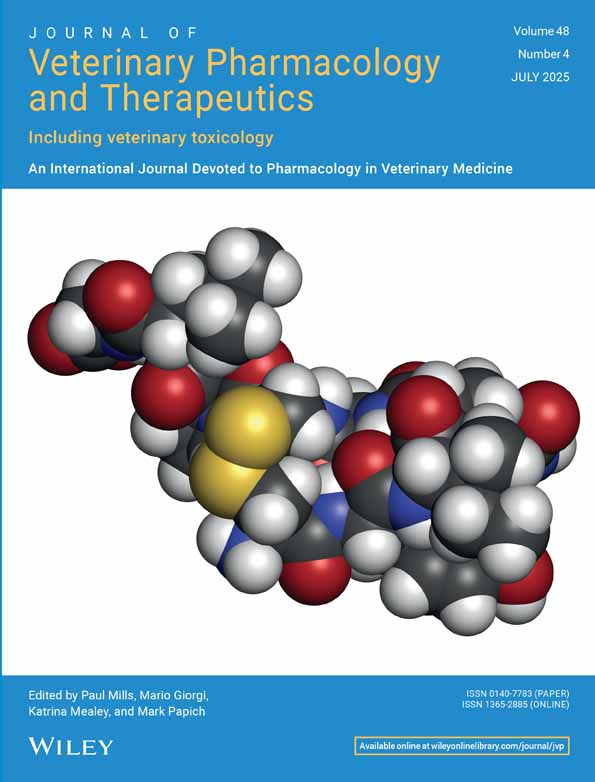Pharmacokinetics of an injectable sustained-release formulation of morphine for use in dogs
Abstract
This study investigated the pharmacokinetics of morphine sulphate in an injectable chitosan-based gel. Gels were made from a combination of N-O-carboxymethylchitosan (NOCC) and chitosan and were easily injectable via a 22 gauge needle and appeared stable during long-term storage. Groups of six beagles were injected subcutaneously (s.c.) with 1.2 mg/kg morphine sulphate, either in sterile saline or in sterilized gels, and serial blood samples were withdrawn via a jugular catheter and later analysed for morphine concentrations using radioimmunoassay. Data were analysed according to non-compartmental pharmacokinetics. NOCC-based gels resulted in significantly lower serum morphine concentrations at 10 and 30 min following injection but significantly higher concentrations at all points from 120 to 480 min post-injection. Dogs receiving morphine gel exhibited equivalent or lesser variability in serum morphine concentrations than dogs receiving conventional morphine sulphate. Pharmacokinetic analysis revealed that morphine release from the gel matrix was significantly prolonged but fully bioavailable. There were no significant differences in either distribution (Vd) or terminal elimination (t1/2). Dogs experienced no adverse effects other than those normally associated with morphine administration at the time of injection but all dogs receiving the gel presented with an undefined stiffness the next day that resolved spontaneously within 48 h. We conclude that carboxymethylchitosan-based gels hold considerable promise for the development of injectable sustained-release formulations of opioid analgesics.




